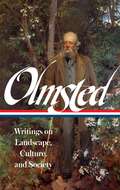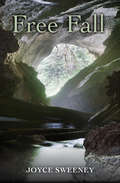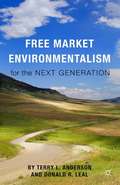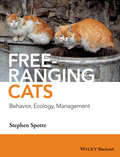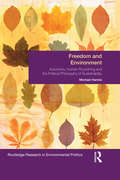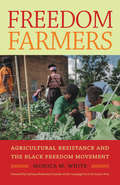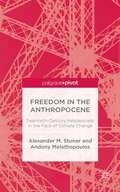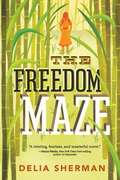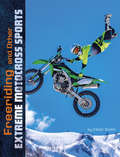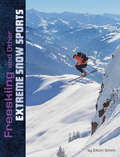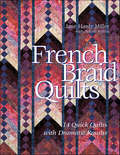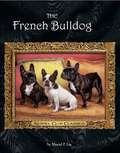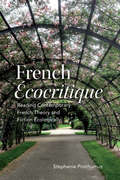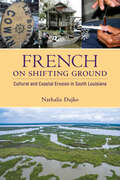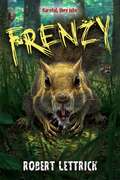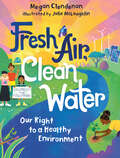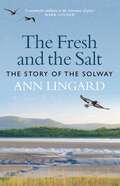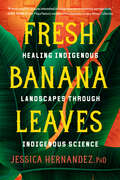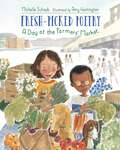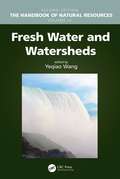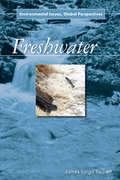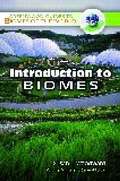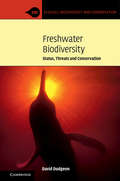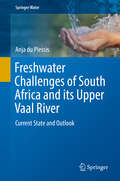- Table View
- List View
Frederick Law Olmsted: Writings on Landscape, Culture, and Society
by Frederick Law Olmsted Charles BeveridgeThe biggest and best single-volume collection ever published of the fascinating and wide-ranging writings of a vitally important nineteenth century cultural figure whose work continues to shape our world today. Seaman, farmer, abolitionist, journalist, administrator, reformer, conservationist, and without question America's foremost landscape architect and urban planner, Frederick Law Olmsted (1822-1903) was a man of unusually diverse talents and interests, and the arc of his life and writings traces the most significant developments of nineteenth century American history. As this volume reveals, the wide-ranging endeavors Olmsted was involved in--cofounding The Nation magazine, advocating against slavery, serving as executive secretary to the United States Sanitary Commission (precursor to the Red Cross) during the Civil War, championing the preservation of America's great wild places at Yosemite and Yellowstone--emerged from his steadfast commitment to what he called "communitiveness," the impulse to serve the needs of one's fellow citizens. This philosophy had its ultimate expression is his brilliant designs for some of the country's most beloved public spaces: New York's Central Park, Prospect Park in Brooklyn, Boston's "Emerald Necklace," the Biltmore Estate in North Carolina, the grounds of the U.S. Capitol, garden suburbs like Chicago's Riverside, parkways (a term he invented) and college campuses, the "White City" of the 1893 World's Columbian Exposition, and many others. Gathering almost 100 original letters, newspaper dispatches, travel sketches, essays, editorials, design proposals, official reports, reflections on aesthetics, and autobiographical reminiscences, this deluxe Library of America volume is profusely illustrated with a 32-page color portfolio of Olmsted's design sketches, architectural plans, and contemporary photographs. It also includes detailed explanatory notes and a chronology of Olmsted's life and design projects.From the Hardcover edition.
Free Fall
by Joyce SweeneyWhen four boys decide to spend the day exploring a cave, they have no idea that their fun afternoon is about to become a fight for survival Neil and his best friend, Randy, can't wait to explore a nearby cave for the afternoon. But when Neil's little brother, David, finds out, Neil is forced to bring David and his timid friend Terry along for the ride. What starts out as an exciting expedition soon turns dangerous when the four boys get lost in the cave's labyrinth of winding passages. Neil knows it's not David's fault that they're lost, yet he still lashes out at his brother with every wrong turn, and Randy and David's constant bickering isn't helping to calm his nerves. As tension builds between the boys, Neil and David try to address what they've kept hidden for years: the truth about David that can never be forgotten--or forgiven. Hopelessly lost, angry, hungry, and terrified, the boys are willing to do just about anything to find a way out of the cave before they end up killing one another. But to escape, Neil and David are going to have to figure out a way to put the past behind them and work together.
Free Market Environmentalism for the Next Generation
by Terry L. Anderson Donald R. LealThis book provides a vision for environmentalism's future, based on the success of environmental entrepreneurs around the world. The work provides the next generation of environmental market ideas and the chapters are co-authored with young scholars and policy analysts who represent the next generation of environmental leaders.
Free-ranging Cats
by Stephen SpotteFeral and stray domestic cats occupy many different habitats. They can resist dehydration for months by relying exclusively on the tissue water of their prey allowing them to colonize remote deserts and other inhospitable places. They thrive and reproduce in humid equatorial rainforests and windswept subantarctic islands. In many areas of the world feral cats have driven some species of birds and mammals to extinction and others to the edge, becoming a huge conservation concern. With the control of feral and stray cats now a top conservation priority, biologists are intensifying efforts to understand cat behaviour, reproductive biology, use of space, intraspecies interaction, dietary requirements, prey preferences, and vulnerability to different management strategies. This book provides the most comprehensive review yet published on the behavior, ecology and management of free-ranging domestic cats, whether they be owned, stray, or feral. It reviews management methods and their progress, and questions several widely accepted views of free-ranging cats, notably that they live within dominance hierarchies and are highly social. Insightful and objective, this book includes: a functional approach, emphasizing sensory biology, reproductive physiology, nutrition, and space partitioning; clear treatment of how free-ranging cats should be managed; extensive critical interpretation of the world's existing literature; results of studies of cats in laboratories under controlled conditions, with data that can also be applied to pet cats. Free-ranging Cats: Behavior, Ecology, Management is valuable to ecologists, conservation scientists, animal behaviorists, wildlife nutritionists, wildlife biologists, research and wildlife veterinarians, clinical veterinarians, mammalogists, and park and game reserve planners and administrators.
Free Spirit
by David RookFrom the Book jacket: He was extraordinary. He was the Fox who gloried in the hunt, the Fox who couldn't be caught! Tag knew more tricks than a dozen foxes put together. He could give them a hunt that made every heart beat wild. And for good reason. He had been reared in Asher's kennels, raised with Asher's own foxhounds. Tag's antics made the Belstone Hunt a legend. His bond with the dog named Merlin made that runt of the litter into leader of the pack. Until suddenly sport turned to tragedy. Asher swore revenge. The game was over. His hounds were hot on the trail, teeth bared for the kill.
Freedom and Environment: Autonomy, Human Flourishing and the Political Philosophy of Sustainability (Environmental Politics)
by Michael HannisMust freedom be sacrificed to achieve ecological sustainability - or vice versa? Can we be genuinely free and live in sustainable societies? This book argues that we can, if we recognise and celebrate our ecological embeddedness, rather than seeking to transcend it. But this does not mean freedom can simply be redefined to fit within ecological limits. Addressing current unsustainability will involve significant restrictions, and hence will require political justification, not just scientific evidence. Drawing on material from perfectionist liberalism, capabilities approaches, human rights, relational ethics and virtue theory, Michael Hannis explores the relationship between freedom and sustainability, considering how each contributes to human flourishing. He argues that a substantive and ecologically literate conception of human flourishing can underpin both capability-based environmental rights and a eudaimonist ecological virtue ethics. With such a foundation in place, public authorities can act both to facilitate ecological virtue, and to remove structural incentives to ecological vice. Freedom and Environment is a lucid addition to existing literature in environmental politics and virtue ethics, and will be an excellent resource to those studying debates about freedom with debates about ecological sustainability.
Freedom Farmers: Agricultural Resistance and the Black Freedom Movement (Justice, Power, and Politics)
by Monica M. WhiteIn May 1967, internationally renowned activist Fannie Lou Hamer purchased forty acres of land in the Mississippi Delta, launching the Freedom Farms Cooperative (FFC). A community-based rural and economic development project, FFC would grow to over 600 acres, offering a means for local sharecroppers, tenant farmers, and domestic workers to pursue community wellness, self-reliance, and political resistance. Life on the cooperative farm presented an alternative to the second wave of northern migration by African Americans--an opportunity to stay in the South, live off the land, and create a healthy community based upon building an alternative food system as a cooperative and collective effort.Freedom Farmers expands the historical narrative of the black freedom struggle to embrace the work, roles, and contributions of southern black farmers and the organizations they formed. Whereas existing scholarship generally views agriculture as a site of oppression and exploitation of black people, this book reveals agriculture as a site of resistance and provides a historical foundation that adds meaning and context to current conversations around the resurgence of food justice/sovereignty movements in urban spaces like Detroit, Chicago, Milwaukee, New York City, and New Orleans.
Freedom in the Anthropocene: Twentieth-Century Helplessness in the Face of Climate Change
by Alexander M. Stoner Andony MelathopoulosFreedom in the Anthropocene illuminates the Anthropocene from the perspective of critical theory. The authors contextualize our current ecological predicament by focusing on the issues of history and freedom and how they relate to our present inability to render environmental threats and degradation recognizable and surmountable.
The Freedom Maze
by Delia ShermanThirteen-year-old Sophie isn’t happy about spending the summer of 1960 at her grandmother’s old house in the bayou. Bored and lonely, she can’t resist exploring the house’s maze, or making an impulsive wish for a fantasy-book adventure with herself as the heroine. What she gets instead is a real adventure: a trip back in time to 1860 and the race-haunted world of her family’s Louisiana sugar plantation. Here, President Lincoln’s Emancipation Proclamation is still two years in the future and passage of the Thirteenth Amendment is almost four years away. And here, Sophie is mistaken, by her own ancestors, for a slave.
Freeriding and Other Extreme Motocross Sports (Natural Thrills)
by Elliott SmithCheck out the fast sport of freeriding! Learn about freeriding, how it started, equipment needed, and safety measures taken for this extreme sport. Discover other motocross sports, and find out how athletes practice their skills and experience thrills in nature.
Freeskiing and Other Extreme Snow Sports (Natural Thrills)
by Elliott SmithBundle up and follow the frosty world of freeskiing. Learn about freeskiing, equipment needed, and safety measures taken for this extreme sport. Discover other snow sports, and see how athletes practice their skills and experience thrills in nature.
French Braid Quilts: 14 Quick Quilts with Dramatic Results
by Jane Hardy Miller Arlene NettenSimple Piecing - Spectacular Quilts • One great technique, a variety of different looks! • LEARN TO USE VALUE: Create glowing effects by choosing a gradated range of fabrics. • Super-easy piecing means fast quilt construction • Make it yours with pretty borders, separator bands, and other creative variations Color is key when you "braid" a variety of fabrics into an eye-catching quilt. Learn to identify value in fabric and use it to create the effect you want-in these quilts and every quilt you make! Fourteen projects range from striking wall hangings to bed quilts.
The French Bulldog
by Muriel P. LeeThe first title in the exciting new Kennel Club Classics series is French Bulldog, an elaborate photographic celebration of one of the dog world's most beloved breeds. Written and compiled by Just Frenchies editor Muriel P. Lee, this 200-page hardcover volume features articles on the breed's history by Anne M. Hier, breed health by Janice Grebe, judging by Virginia Rowland, the breed in England and France by Penny Rankine-Parsons, the breed in Australia and New Zealand by Michael Rosser, and working dogs by Bette and Manda Kaplan. No Frenchie lover will live without this volume on their coffee table!
French 'Ecocritique': Reading French Theory and Fiction Ecologically
by Stephanie PosthumusFrench Écocritique is the first book-length study of the culturally specific ways in which contemporary French literature and theory raise questions about nature and environment. Stephanie Posthumus’s ground-breaking work brings together thinkers such as Guattari, Latour, and Serres with recent ecocritical theories to complicate what might otherwise become a reductive notion of "French ecocriticism." Working across contemporary philosophy and literature, the book defines the concept of the ecological as an attentiveness to specific nature-culture contexts and to a text’s many interdiscursive connections. Posthumus identifies four key concepts, ecological subjectivity, ecological dwelling, ecological politics, and ecological ends, for changing how we think about human-nature relations. French Écocritique highlights the importance of moving beyond canonical ecocritical texts and examining a diversity of cultural and literary traditions for new ways of imagining the environment.
French on Shifting Ground: Cultural and Coastal Erosion in South Louisiana (America's Third Coast Series)
by Nathalie DajkoIn French on Shifting Ground: Cultural and Coastal Erosion in South Louisiana, Nathalie Dajko introduces readers to the lower Lafourche Basin, Louisiana, where the land, a language, and a way of life are at risk due to climate change, environmental disaster, and coastal erosion. Louisiana French is endangered all around the state, but in the lower Lafourche Basin the shift to English is accompanied by the equally rapid disappearance of the land on which its speakers live. French on Shifting Ground allows both scholars and the general public to get an overview of how rich and diverse the French language in Louisiana is, and serves as a key reminder that Louisiana serves as a prime repository for Native and heritage languages, ranking among the strongest preservation regions in the southern and eastern US. Nathalie Dajko outlines the development of French in the region, highlighting the features that make it unique in the world and including the first published comparison of the way it is spoken by the local American Indian and Cajun populations. She then weaves together evidence from multiple lines of linguistic research, years of extensive participant observation, and personal narratives from the residents themselves to illustrate the ways in which language—in this case French—is as fundamental to the creation of place as is the physical landscape. It is a story at once scholarly and personal: the loss of the land and the concomitant loss of the language have implications for the academic community as well as for the people whose cultures—and identities—are literally at stake.
Frenzy
by Robert LettrickCamp Harmony. A place to relax, swim in the river, and stage epic water fights. A time to escape and admire the outdoors. That was how Heath Lambert wanted to spend his summer. But nobody told him that he would spend it running for his life. Almost every animal in the surrounding forest-thousands of them, from squirrels to wolves-has gone on the attack. Even the camp's horses! If Heath and his friends are to stay alive, they have only one place to go. But getting there is just half the battle.
Fresh Air, Clean Water: Our Right to a Healthy Environment (Orca Think #4)
by Megan ClendenanEveryone depends on clean air to breathe, safe water to drink and healthy soil for growing food. But what if your drinking water is dangerous, your air is polluted and your soil is toxic? What can you do about that? Do you have the right to demand change? Fresh Air, Clean Water: Defending Our Right to a Healthy Environment explores the connections between our environment and our health, and why the right to live in a healthy environment should be protected as a human right. The book features profiles of kids around the world who are taking action and important environmental rights court cases. Hear the powerful stories of those fighting for change.
The Fresh and the Salt: The Story of the Solway
by Ann Lingard“Beautiful, intensely visual prose, born from deep intimacy with subtle borderlands: land and sea, England and Scotland, people and environments.” —David Gange, author of The Frayed Atlantic EdgeFirths and estuaries are liminal places, where land meets sea and tides meet freshwater. Their unique ecosystems support a huge range of marine and other wildlife: human activity too is profoundly influenced by their waters and shores.The Solway Firth—the crooked finger of water that both unites and divides Scotland and England—is a beautiful yet unpredictable place and one of the least-industrialized natural large estuaries in Europe. Its history, geology and turbulent character have long affected the way its inhabitants, both human and non-human, have learnt to live along and within its ever-changing margins.“Lingard’s scientific knowledge of the area and its multitudinous inhabitants [is] delivered in riveting prose. This is deep and beautiful natural history writing.” —BBC Countryfile Magazine“Like a hungry gull, Ann Lingard explores her beloved Solway shoreline for every living detail that catches her eye. In so doing she has created a portrait of this nation-cleaving water that is as broad and deep as the estuary itself.” —Mark Cocker, author of Birds & People“A kaleidoscopic portrait of the borders of the land.” —Cumbria Life“Lingard writes vividly about this estuary . . . an excellent point of reference for locals, visitors and for those simply intrigued by this lesser-known corner of Scotland.” —Scottish Field
Fresh Banana Leaves: Healing Indigenous Landscapes through Indigenous Science
by Jessica HernandezAn Indigenous environmental scientist breaks down why western conservationism isn't working--and offers Indigenous models informed by case studies, personal stories, and family histories that center the voices of Latin American women and land protectors.Despite the undeniable fact that Indigenous communities are among the most affected by climate devastation, Indigenous science is nowhere to be found in mainstream environmental policy or discourse. And while holistic land, water, and forest management practices born from millennia of Indigenous knowledge systems have much to teach all of us, Indigenous science has long been ignored, otherized, or perceived as "soft"--the product of a systematic, centuries-long campaign of racism, colonialism, extractive capitalism, and delegitimization. Here, Jessica Hernandez--Maya Ch'orti' and Zapotec environmental scientist and founder of environmental agency Piña Soul--introduces and contextualizes Indigenous environmental knowledge and proposes a vision of land stewardship that heals rather than displaces, that generates rather than destroys. She breaks down the failures of western-defined conservatism and shares alternatives, citing the restoration work of urban Indigenous people in Seattle; her family's fight against ecoterrorism in Latin America; and holistic land management approaches of Indigenous groups across the continent. Through case studies, historical overviews, and stories that center the voices and lived experiences of Indigenous Latin American women and land protectors, Hernandez makes the case that if we're to recover the health of our planet--for everyone--we need to stop the eco-colonialism ravaging Indigenous lands and restore our relationship with Earth to one of harmony and respect.
Fresh-Picked Poetry: A Day at the Farmers' Market
by Michelle SchaubThis collection of poems takes young readers to a day at an urban farmers&’ market. Who to see, what to eat, and how produce is grown—it&’s all so exciting, fresh, and delicious. Readers are invited to peruse the stands and inspect vendors&’ wares with poems like &“Farmer Greg&’s Free-Range Eggs,&” &“Summer Checklist,&” and &“Necessary Mess.&”Bright and vibrant, this is the perfect guide for little ones to take with them on marketing day to inspire literacy and healthy eating.A pleasing window into the world of the farmers&’ market — School Library Journal, starred reviewSprightly illustrations and engaging rhymes will leave readers eager to sample market bounty — Kirkus ReviewsThis cheerful collection of verse offers an enticing introduction to farmers&’ markets — Booklist
Fresh Water and Watersheds
by Yeqiao WangAuthored by world-class scientists and scholars, The Handbook of Natural Resources, Second Edition, is an excellent reference for understanding the consequences of changing natural resources to the degradation of ecological integrity and the sustainability of life. Based on the content of the bestselling and CHOICE-awarded Encyclopedia of Natural Resources, this new edition demonstrates the major challenges that the society is facing for the sustainability of all well-being on the planet Earth. The experience, evidence, methods, and models used in studying natural resources are presented in six stand-alone volumes, arranged along the main systems of land, water, and air. It reviews state-of-the-art knowledge, highlights advances made in different areas, and provides guidance for the appropriate use of remote sensing and geospatial data with field-based measurements in the study of natural resources. Volume 4, Fresh Water and Watersheds, covers fresh water and watersheds, their health and conservation, protection, and management. Organized for ease of reference, it provides fundamental information on groundwater storage, water quality, supply and balance, and water resource vulnerability. New in this edition are discussions on water footprint assessment, water surface dynamics, and water management on a global scale. Understanding the conditions of watersheds is crucial for restoring areas with degraded water quality as well as protecting healthy waters from emerging problems. This volume demonstrates the key processes, methods, and models used through several practical case studies from around the world. Written in an easy-to-reference manner, The Handbook of Natural Resources, Second Edition, as individual volumes or as a complete set, is an essential reading for anyone looking for a deeper understanding of the science and management of natural resources. Public and private libraries, educational and research institutions, scientists, scholars, and resource managers will benefit enormously from this set. Individual volumes and chapters can also be used in a wide variety of both graduate and undergraduate courses in environmental science and natural science at different levels and disciplines, such as biology, geography, earth system science, and ecology.
Freshwater: Environmental Issues, Global Perspectives
by James Fargo BalliettFreshwater is our planet’s most precious resource, and also the least conserved. Freshwater makes up only 3 percent of the total water on the planet, and yet the majority (1.9 percent) is held in a frozen state in glaciers, icebergs, and polar ice fields. This leaves approximately one-half of 1 percent of the total volume of water on the planet as freshwater available in liquid form. This book traces the complex history of the steady growth of humankind’s water consumption, which today reaches some 9.7 quadrillion gallons per year. Along with a larger population has come the need for more drinking water, larger farms requiring extensive irrigation, and more freshwater to support business and industry. At the same time, such developments have led to increased water pollution. Three detailed case studies are included. The first looks at massive water systems in locations such as New York City and the efforts required to protect and transport such resources. The second shows how growth has affected freshwater quality in the ecologically unique and geographically isolated Lake Baikal region of eastern Russia. The third examines the success story of the privatized freshwater system in Chile and consider how that country’s water sources are threatened by climate change.
Freshwater Aquatic Biomes (Greenwood Guides to Biomes of the World)
by Richard A. RothFor middle and high school students and undergraduates, Woodward, editor of the biomes series and former professor of biogeography and physical geography at Radford U., presents an introduction to biomes. She discusses the concept of the biome and other geographic trends exhibited by life, including taxonomic and evolutionary patterns, related ecological concepts such as ecosystems and soils, and environmental factors that affect the nature of terrestrial and aquatic biomes at the global scale. Use of scientific terminology is minimized. Annotation ©2009 Book News, Inc., Portland, OR (booknews.com)
Freshwater Biodiversity: Status, Threats and Conservation (Ecology, Biodiversity and Conservation)
by David DudgeonGrowing human populations and higher demands for water impose increasing impacts and stresses upon freshwater biodiversity. Their combined effects have made these animals more endangered than their terrestrial and marine counterparts. Overuse and contamination of water, overexploitation and overfishing, introduction of alien species, and alteration of natural flow regimes have led to a 'great thinning' and declines in abundance of freshwater animals, a 'great shrinking' in body size with reductions in large species, and a 'great mixing' whereby the spread of introduced species has tended to homogenize previously dissimilar communities in different parts of the world. Climate change and warming temperatures will alter global water availability, and exacerbate the other threat factors. What conservation action is needed to halt or reverse these trends, and preserve freshwater biodiversity in a rapidly changing world? This book offers the tools and approaches that can be deployed to help conserve freshwater biodiversity.
Freshwater Challenges of South Africa and its Upper Vaal River
by Anja Du PlessisThis book promotes better understanding and awareness of South Africa' significant water problems by describing the country's and especially the Vaal River's water resources. It is a "go-to" book for students, professionals and regular citizens when information is required regarding the country's and more specifically the Vaal River's freshwater resources. It highlights the major problems and risks which need to be addressed and give a realistic and true representation of the current water affairs.
